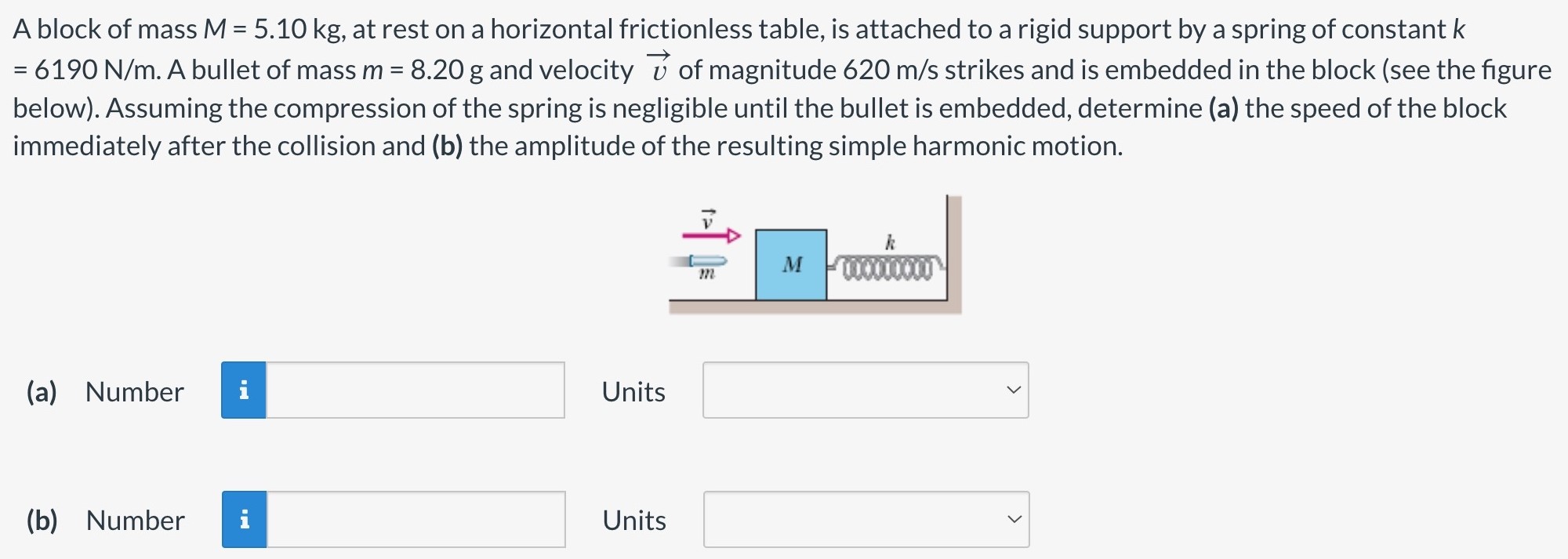A block of mass M = 5.10 kg, at rest on a horizontal frictionless table, is attached to a rigid support by a spring of constant k = 6190 N/m. A bullet of mass m = 8.20 g and velocity v→ of magnitude 620 m/s strikes and is embedded in the block (see the figure below). Assuming the compression of the spring is negligible until the bullet is embedded, determine (a) the speed of the block immediately after the collision and (b) the amplitude of the resulting simple harmonic motion. (a) Number Units (b) Number Units
